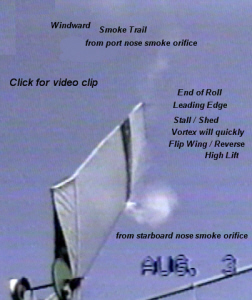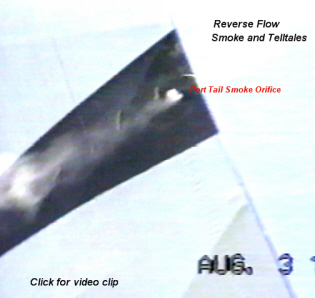|
1.
How much water flow will the Cottagepump and Yardpump deliver?
Our 1.375" internal
diameter cylinder will deliver about 18 litres/minute at 3 foot stroke.
Depending upon demand, other sizes of cylinders for other depths may be
introduced. We have a few prototypes and some tooling for a 1.75"
internal diameter cylinder. These prototypes were treadled at 2 foot
stroke to yield 24 litres/minute.
2. How deep down a well can the Pullpump technology reach?
The Pullpumps are NOT suction pumps which are limited to wells less than
32 feet. The initial shuttle that we have for sale is sized for
comfortable treadling from depths of up to 100 feet.
The depth that future smaller sizes can operate from is limited by the
stretching of the polyethylene drop pipe and the pump cable. Wire rope
should be used down deep wells and spliced to rope to run over the
cottage pump pulleys. Increasing its size and switching to 1x19 lay will
reduce the wire stretch very significantly for wells deeper than 100
feet, but even for the Yardpump there must be a joint to a maximum 3/16
7x19 wire to go around the clothesline pulley at the top.
The present size of polyethylene drop pipe stretches 6" from
straight at a depth of 300 feet during the Pullpump cycle. This is
probably the ultimate limiting depth given that one must add the
straightening of residual curving in the wellcasing from the coiling for
shipment.
3. Is my site suitable for the Cottagepump?
The most
suitable site has almost level diggable ground between the wellhead and
the cabin. While the buried PVC pipe can be curved slightly and the rope
still run acceptably inside it, major jogs in plan such as around rock
outcroppings will require additional pairs of CP pulley elbows.
4. Is my waterbody suited to the Flo'Pump?
An
indicator of a good Flo'Pump location is whether the wind ruffles the
surface of the water at the anchoring point. Upwind groups of trees such
as water-loving poplars (cottonwoods) inevitably cause problems and have
to be sacrificed. Also on a small dugout, consider the sheltering as the
Flo'Pump lowers the level in the pond to within 2 feet of the bottom. On
a small pond (with good recharge) the Flo'Pump can be located by three
non-bouyant lines to the shore. The wingtip must not be able to touch the
pond bank so the anchor point must be surrounded by at least 30 feet of
water in all directions when the pond is at its lowest. At a pumping
power (see #6) of 100w averaged over calms, the Flo'Pump will lower an
unrecharged 100' square pond about a metre per week. The Flo'Pump will
tolerate the worst waves in storms from fetches of up to a mile. It is
easy to rig up a winch for the Flo'Pump to carry and set its own anchor
weight, typically 200 lbs. A small row boat is useful for accessing the
anchored Flo'Pump and for towing it to shore or around a lake (with
anchor suspended).
5. Is my well suited to the Flutterwellpump?
The ideal
site has no wind obstructions such as trees or two-storey buildings
nearby, especially upwind against the prevailing wind. The obstructions
above the height of the bottom of the tailvane should be 7 times more
distant than their excess height, or 5 times more distant than their
total width. Wind steadiness of direction can be tested with a ribbon; a
shift of 60 degrees in less than 10 seconds is about the limit for
sustained oscillation.
Keep the Flutterwellpump clear of powerlines and public rights-of-way.
The ideal well casing is steel grouted into bedrock, so that no
foundation is needed. Grouting the casing in also prevents any clearance
space between the hole to bedrock and the casing filling with drilling
mud, which offers little support. A nearby strong point such as a small
tree in the crosswind direction is ideal for handwinching the Flutterwell
Pump up and down.
6. How much pumping power do the Wing'dmills have?
The graph
horizontal axis is wind speed at mid-wing in knots= twice the windspeed
in meters/sec.
The
vertical axis is output pumped watts = 10 x flow in litres/second x head
in meters
The peak 250 watts is about 6 times what a human
can sustain on a treadle pump.

There are
many points of caution about use of this graph. First, airports report
windspeeds at 10 m height, typically wingtip for a Flutterwellpump.
Secondly, your site windspeed may be very different than that at the
nearest airport.
The Flutterwellpump and Flo'Pump are suitable for light but steady winds,
with typical winds about 6 knots and mean windspeed about half of that.
The typical multiblade Aeromotor table had to be rescaled to reflect how
it would pump in comparison if it were also setup with a light pump load
for operation in such light winds.
The Flutterwellpump and Flo'Pump can undoubtedly be setup for a slight
multiple of these winds by increasing the pendulum frequency
proportionately. Then the pump load = head x stroke volume must be
increased as the square of the multiple, and the delivered power will be
the increased as the cube of the multiple. However there are limits of
wing strength and pumping speed to be wary of, as well as more subtle
scaling effects ultimately threatening the high wind safety.
In the Flutterwellpump, the wing and pendulum are limited to stay at
least 8 feet above the ground, to always be clear of people or animals.
In the Flo'Pump the wing and pendulum can just scrape the water, so the
maximum angles of swing are the same, and the graphs should be identical.
Wind over water is steadier and stronger; but has less of a gradient,
which detracts a bit from the peak power, but improves the high wind
safety.
7. What different sizes of Wing'dmills are possible?
The
wing'dmill solution is radically outside the paradigm of conventional
small windmills. The Wing'dmills are big and powerful, yet light and
don't need much wind. This is possible because of their inherent
self-protection in storms. Wings have been built from 14 feet to 19 feet
in length and larger sizes are easily possible, at least up to 24 feet.
The construction method and cheap cost of wing materials economically
favour large sizes. But trying to design a small wing'dmill for windy areas
is problematic. Then the effectiveness of gravity versus inertial forces
is diminished in flipping the wing, in returning the pendulum, and down
stroking the pump.
8. What makes the wing'dmills oscillate in moderate winds but not
high winds?
The basic phenomenom is binary flutter.
Binary because the wing 1) can pitch about a spanwise axis less than one
quarter of its chord behind its leading edge, but that axis itself 2)
rolls crosswind as part of the pendulum. The two motions are statically
coupled by the wing being statically imbalanced, specifically tailheavy
about its pitch axis, so that a roll inclination of that axis makes the
wing want to swing its trailing edge to that side. There is also dynamic
"flick" coupling from dynamic imbalance of the wing, as in the
aircraft flutter, which caused many crashes before it was understood.
Thanks to the tailvane, equilibruim is upright with the wing feathering
into the wind. However for a range of windspeeds from light to moderate
this equilibruim is unstable and disturbances by windshifts grow
exponentially into a large amplitude oscillation. It is easy to see how
as the pendulum is slowed by gravity and the pump pull, the wing falls by
gravity and its inertia from being tail-high to tail-low ; which then makes
the wind drive the pendulum back to the other side, and so on..
The wind is actually damping this wing pitch oscillation, just like it
overdamps a windvane released from an angle to the wind so much that the
windvane never overshoots the real wind direction. This wind damping of
pitch increases with windspeed whereas the pitching torque on the wing
due to roll and gravity doesn't. So the amount of wing pitch steadily
decreases with windspeed, limiting the wing angle of attack and its
stress to a safe level.
Ultimately as the wind rises, its damping of pitch is just too much and
the feathered equilibruim becomes stable. The wind also raises the
frequency of pitch response which becomes much greater than the roll
frequency of the pendulum, upsetting the resonance. However just as in
the windvane situation , the damping effect is the dominant one.
9. What makes the wing'dmills so efficient in light (but steady)
winds?
As the wing transverse speed builds relative to the light windspeed,
aerodynamic non-linearities greatly enhance the energy capture of the
starting mode of high pitch/roll with only 65 deg phase advance .
For a laminar light wind increasing in proportion to the height above
the roll axis at the top of the vegetation layer; the apparent wind is at
uniform angle of attack all along the wing and uniform multiple of the
true wind, peaking at 3 for 9 times the dynamic pressure.
The fresh wing boundary layer every swing dynamically delays stall
(completely for sections thicker than NACA 0012) to allow very high lift
(and L/D) coefficients as the pitch trace saturates into a square wave of
+/-90 deg.
At the end of the roll swing, the wing begins to back up due to the
small phase shift. Despite the sharp edge at extreme angle to the true
wind, the new reverse boundary layer remains attached right back to the
nose which sheds a huge vortex away from the swept area. The growing
reverse lift will be centered near the 3/4 chord point for a rapidly
increasing moment to start flipping the wing about the pitch axis. Then
the pitch mass imbalance torques, large at moderate pitch angles relative
to normal lightwind torques can effect the complete reversal of the pitch.
It seems the new wing circulation is unchanged in this rapid 180 deg
flip, and that the initial shed vortex carries away almost all the entire
change in circulation.
The strong increase of such dynamic flip impulses along the span vs
the uniform distribution of pitch inertia (mainly from the added mass and
the trailing edge) explains why high torsional rigidity had been found to
be critical in power tests of 6 full-scale wings.
  
|